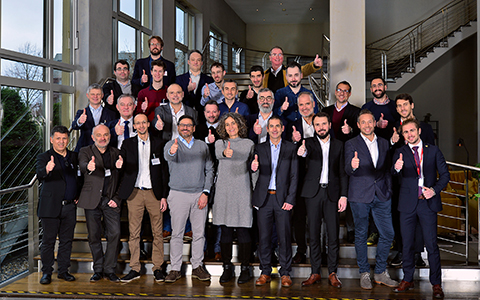Hybrid Electric propulsion system for regional AiRcrafT
Project partners:
Rolls-Royce, Airbus, ATR, Calyos, Capgemini España, CENAERO, CERFACS, CESA, EC Lyon, CNRS, CATEC, GSC, Ingpuls GmbH, INCAS, Leonardo, NTNU, ONERA, Ratier Figeac, Safran, SINTEF, Skylife Engineering, Thiot Ingénierie, UC Louvain, University of Lodz, VKI

HE-ART aims to validate the viability of a hybrid electric thermal turboprop (e-TP) on a ground test demonstrator. It comprises a turboprop engine from one of the major partners, an advanced electric drive train and a propeller. The power size of both, the turboprop engine and the electric drive train, is of the size suitable for a regional aircraft application.
Requirements from a representative regional aircraft concept will be outlined and provided to the ground test demonstrator. In turn, requirements from the ground test demonstrator will be worked out and cascaded to the systems, e.g., the technology bricks covering propeller, modular hybrid gearbox, electric drive train, nacelle incl. heat exchanger, hybrid electric turboprop engine, electrical propulsion power distribution & protection and power management.